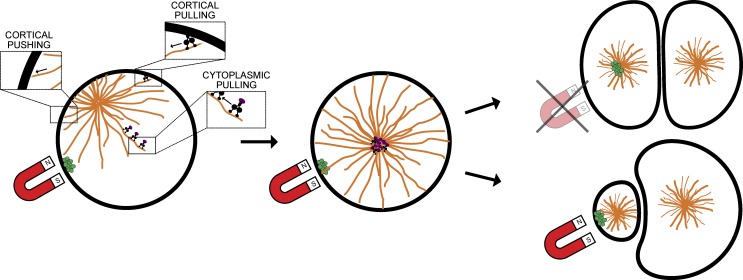Figure 1.
Asymmetric division occurs through a reduction of microtubule centering forces in sea urchin zygotes. Magnetic forces localize motor proteins attached to magnetic beads (green) at the cell cortex (black), but nuclear microtubule aster (orange) centration, potentially driven by cortical pushing, cortical pulling, and cytoplasmic pulling mechanisms (insets), is unaffected by the presence of these asymmetric force generators (left). Once centration is complete (middle), the centering forces are attenuated and the beads bias the microtubule aster toward the cortex in the presence of magnetic forces, but migrate to the centered aster in the absence of magnetic forces. Ultimately, the position of the division plane, be it symmetric or asymmetric, is determined by the position of the aster (right).

